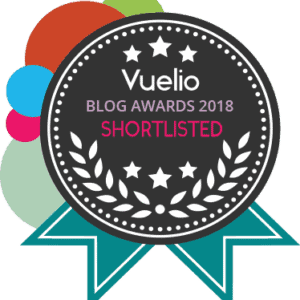You might not realize just how powerful storytelling can be in empowering women. By sharing their unique experiences, women can challenge societal norms and foster a sense of community that drives change. This approach not only enhances personal growth but also provides a platform for voices often left unheard. As you explore the nuances of educational storytelling, consider how these narratives can reshape perceptions and inspire action. What might happen when these stories are given the attention they deserve?
The Power of Storytelling
Storytelling holds incredible power, shaping our understanding of the world and ourselves. When you engage with a story, you’re not just a passive listener; you’re actively participating in a shared experience that can inspire, educate, and transform.
Stories resonate on an emotional level, allowing you to connect with diverse perspectives and cultures. This connection fosters empathy, making it easier to understand the challenges and triumphs of others, especially women whose voices have often been marginalized.
You might find that storytelling empowers you by giving you a platform to express your own experiences and insights. Sharing your narrative can inspire others to reflect on their journeys, creating a ripple effect of empowerment.
By harnessing the power of storytelling, you can challenge stereotypes, break down barriers, and advocate for change.
Moreover, storytelling encourages critical thinking, as you analyze characters and situations, drawing lessons applicable to your own life. Whether you’re listening to a podcast, reading a book, or watching a documentary, each narrative builds a bridge to understanding and solidarity.
Embrace the power of storytelling—it’s not just about entertainment; it’s about creating a more inclusive and empowered world for everyone.

Historical Context of Women’s Narratives
Uncovering the historical context of women’s narratives reveals how their stories have often been overlooked or silenced throughout time. From ancient civilizations to modern societies, the voices of women have frequently been marginalized, limiting their representation in both literature and history.
For centuries, societal norms dictated that women should remain in the background, focusing on domestic roles rather than sharing their experiences and insights.
As you explore deeper into this context, you’ll see how women’s narratives began to surface during pivotal movements like the suffrage and civil rights movements. These stories played an essential role in challenging the status quo and advocating for change.
Women like Mary Wollstonecraft and Sojourner Truth used their narratives to assert their rights and amplify the voices of others, paving the way for future generations.
The rise of feminist literature in the 20th century further highlighted the importance of women’s perspectives. You’ll find that today, storytelling has become a powerful tool for women to reclaim their narratives, fostering empowerment and connection.
Understanding this historical journey not only enriches your appreciation of women’s stories but also inspires you to recognize their importance in shaping our collective history.
Personal Growth Through Sharing Stories
Sharing stories can be a transformative experience that fosters personal growth and self-discovery. When you share your story, you open a door to understanding yourself better. You reflect on your experiences, emotions, and choices, helping you gain insights into who you’re and what you value. This process encourages you to confront challenges, celebrate victories, and acknowledge lessons learned along the way.
As you articulate your journey, you also create connections with others. Listening to their stories can provide new perspectives that enrich your own narrative. You’ll discover common threads and shared experiences, which can validate your feelings and experiences. This sense of belonging can boost your confidence and inspire you to embrace your unique path.
Moreover, storytelling can empower you to face fears and overcome obstacles. By sharing vulnerabilities, you might find that others resonate with your struggles, reminding you that you’re not alone. This collective experience can ignite a sense of resilience and encourage you to pursue personal goals.
Ultimately, sharing stories not only enhances your understanding of yourself but also strengthens your bonds with others, enriching your life and fostering meaningful connections.

Challenging Stereotypes and Misconceptions
Challenging stereotypes and misconceptions is essential for fostering a more inclusive society. Every time you share a story, you have the power to reshape perspectives. By highlighting the diverse experiences of women, you can break down harmful stereotypes that limit their potential. For instance, when you tell stories of women excelling in traditionally male-dominated fields, you challenge the notion that certain careers are off-limits.
Your stories can also confront misconceptions about cultural backgrounds, socioeconomic status, and abilities. By illustrating the lives of women from various walks of life, you humanize their struggles and achievements, making it harder for others to dismiss their experiences. This approach not only empowers the women you focus on but also encourages listeners to rethink their preconceived notions.
In your storytelling, consider incorporating real-life examples that resonate with your audience. Use vivid details and relatable scenarios to draw them in, creating an emotional connection. This connection sparks empathy and understanding, making it easier to challenge stereotypes.
Ultimately, by sharing these narratives, you become an agent of change, paving the way for a society that celebrates diversity and champions the rights of all women.
Building Community Through Storytelling
Connecting through stories fosters a sense of belonging and community among women from diverse backgrounds. When you share your experiences, you create a bridge that connects you to others, allowing them to see their own lives reflected in your narrative. This shared understanding is essential for building strong relationships and dismantling barriers.
Storytelling invites empathy and fosters deeper connections. As you listen to others’ stories, you gain insight into their struggles and triumphs, promoting compassion and solidarity. Every story carries unique lessons and perspectives, enriching the collective experience of the group. You learn that, despite differences, there are universal themes of resilience, hope, and empowerment that resonate with everyone.
Creating safe spaces for storytelling encourages open dialogue. Whether through workshops, community gatherings, or informal meet-ups, these environments empower women to express themselves freely.
When you share your voice, you inspire others to do the same, cultivating a supportive network where everyone feels valued.

Storytelling as a Tool for Education
Storytelling serves as a powerful educational tool that captivates learners and enhances their understanding of complex concepts. When you weave narratives into your lessons, you transform abstract ideas into relatable experiences. This approach makes the material more accessible, allowing you to connect emotionally with the content. It’s especially effective in online schools k-12, where engaging formats are essential for maintaining student interest and participation.
As you engage with stories, you stimulate curiosity and encourage critical thinking. You can analyze characters, motivations, and conflicts, which deepens your comprehension of the subject matter. This interactive process not only aids retention but also fosters a sense of belonging within the learning environment.
Moreover, storytelling promotes active participation. When you share your own stories or listen to others, you create a dialogue that enriches the educational experience. This exchange of perspectives helps you to see the world through different lenses, enhancing empathy and understanding.
Incorporating storytelling into your education empowers you to express your thoughts creatively. It builds confidence in your ability to articulate ideas and connect with peers.
Amplifying Marginalized Voices
Incorporating narratives into education not only enhances learning but also creates a platform for amplifying marginalized voices. When you include diverse stories in your curriculum, you provide students with perspectives they may not encounter otherwise. This exposure fosters empathy, understanding, and critical thinking, essential skills in today’s interconnected world.
By sharing experiences from various backgrounds, you empower students to recognize and celebrate differences. This approach encourages those from marginalized communities to see themselves represented in the educational landscape, which can boost their confidence and engagement. You’re helping to break down stereotypes and challenge the status quo, promoting a more inclusive environment.
Additionally, when you encourage students to share their own stories, you validate their experiences and give them a sense of agency. This practice not only enriches the classroom dialogue but also nurtures a culture of respect and acceptance. You create a space where every voice matters, and that can spark meaningful conversations about social justice and equity.
Ultimately, by amplifying marginalized voices, you’re not just teaching history or literature; you’re cultivating a generation of informed, compassionate individuals ready to make a difference.

Cultural Preservation and Identity
Cultural preservation plays an essential role in shaping identity, especially in diverse educational settings. When you engage with stories from various cultures, you not only learn about others but also deepen your understanding of yourself. These narratives give voice to experiences often overlooked, helping you connect with your roots and the broader human experience.
By sharing personal stories, you affirm your cultural heritage and encourage others to do the same. This exchange fosters a sense of belonging and strengthens community ties. You might find that when you tell your own story, it resonates with others, creating a powerful dialogue that bridges generational and cultural gaps.
Incorporating educational storytelling into your learning environment can enhance cultural awareness among peers. It encourages empathy and respect for different backgrounds, allowing you to appreciate the richness of diversity. This, in turn, empowers you and fellow learners to embrace your identities with pride.
As you navigate through various narratives, remember that each story contributes to a larger tapestry of cultural preservation. By honoring these tales, you help guarantee that future generations will continue to learn from and celebrate their heritage.
The Role of Digital Platforms
Digital platforms serve as powerful conduits for sharing stories and fostering connections across diverse communities. They create spaces where women can voice their experiences, learn from one another, and inspire change.
By leveraging these digital tools, you can amplify your message and reach audiences far beyond your immediate environment.
Here are some key benefits of using digital platforms for storytelling:
- Wider Reach: Share your story with a global audience, breaking geographical barriers.
- Community Building: Connect with like-minded individuals who share similar experiences and values.
- Resource Sharing: Access a wealth of information and tools that can empower you and others.
- Interactive Engagement: Foster discussions and receive feedback, enhancing your narrative.
- Visibility for Issues: Highlight important social issues, driving awareness and advocacy.

Success Stories of Empowered Women
When you hear the inspiring stories of empowered women, it’s easy to see how education and storytelling can transform lives. Take Malala Yousafzai, for instance. Her journey from a young girl advocating for girls’ education in Pakistan to becoming a Nobel laureate showcases the power of storytelling. By sharing her experiences, she raised global awareness about the importance of education for girls, inspiring countless others to take action.
Then there’s Oprah Winfrey, whose life story is a reflection of resilience. From a challenging childhood to becoming a media mogul, Oprah’s narrative empowers women everywhere to overcome adversity. Her educational programs, fueled by her own experiences, encourage women to pursue their dreams.
Don’t forget about Wangari Maathai, the first African woman to receive the Nobel Peace Prize. By advocating for environmental conservation and women’s rights, she illustrated that education can spur change on multiple fronts.
These stories remind you that education isn’t just about acquiring knowledge; it’s about using that knowledge to uplift and inspire others. Each empowered woman you hear about strengthens the belief that storytelling and education can pave the way for a brighter future for all.
Techniques for Effective Storytelling
Effective storytelling techniques can greatly enhance the impact of your message, making it resonate with your audience. To connect deeply and inspire action, consider implementing these techniques in your storytelling approach:
- Know Your Audience: Tailor your story to the interests and experiences of your listeners. Understanding their perspectives helps you craft a relatable narrative.
- Create a Strong Hook: Start with an engaging opening statement or question that grabs attention. This sets the stage for a fascinating journey.
- Use Vivid Imagery: Paint a picture with your words. Descriptive language can evoke emotions and allow your audience to visualize your story.
- Incorporate Personal Experiences: Share your own journey or challenges faced. Authenticity fosters a stronger connection and encourages empathy.
- End with a Call to Action: Conclude your story by motivating your audience to take specific steps. This gives your message purpose and encourages engagement.

Collaborating for Greater Impact
Storytelling can be even more powerful when you collaborate with others who share your vision of empowering women. By joining forces with like-minded individuals, you can amplify your message and reach a broader audience. Each collaborator brings unique perspectives and experiences, enriching the stories you tell.
Consider partnering with educators, community leaders, or fellow storytellers who are passionate about women’s empowerment. Together, you can create workshops, events, or digital storytelling projects that resonate deeply with your audience. Sharing resources, ideas, and support not only enhances your storytelling but also fosters a sense of community.
As you work together, you’ll discover new ways to approach your narratives, making them more relatable and impactful. Engaging diverse voices can highlight different challenges women face and the various paths to overcoming them.
Don’t hesitate to reach out to organizations or networks that focus on women’s issues. They often provide valuable platforms for collaboration and can help you connect with others who share your goals.
Future of Women’s Storytelling Initiatives
The future of women’s storytelling initiatives is bright, fueled by a growing recognition of the power these narratives hold in shaping social change.
As you engage with these initiatives, you’ll notice how they empower women from all walks of life to share their stories, amplify their voices, and inspire others.
Here are some trends to look out for in women’s storytelling initiatives:
- Digital Platforms: Increased use of social media and podcasts will enable women to reach wider audiences.
- Inclusive Narratives: There’s a shift toward showcasing diverse experiences, ensuring every woman’s story is represented.
- Collaborative Projects: Partnerships between organizations will enhance resources and impact, connecting storytellers with audiences.
- Educational Programs: Workshops and training sessions will become more prevalent, equipping women with storytelling skills.
- Community Building: Initiatives will focus on creating supportive networks where women can share their stories and learn from one another.

Conclusion
In empowering women through educational storytelling, you create a ripple effect that inspires change. By sharing experiences, you break down walls and build bridges, fostering understanding and connection. Each story you tell is a thread in the fabric of community, weaving together diverse voices. As you continue this journey, remember that every narrative has the power to challenge stereotypes and ignite action. Together, let’s celebrate these stories, uplift each other, and pave the way for a brighter, more equitable future.
Photo Credit: Pexels.com





























